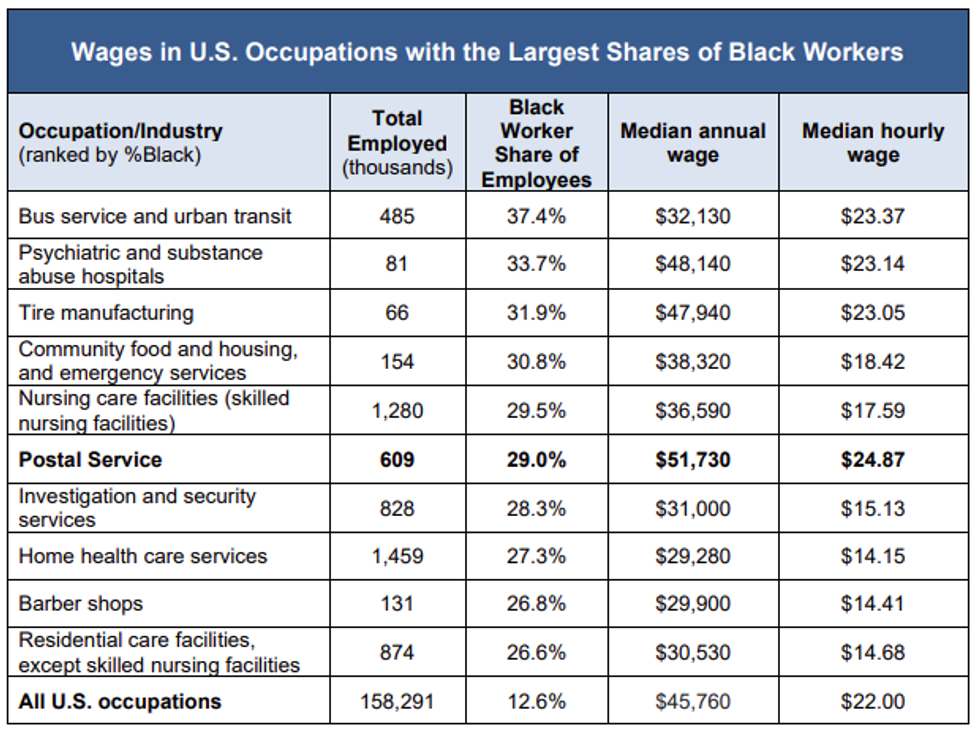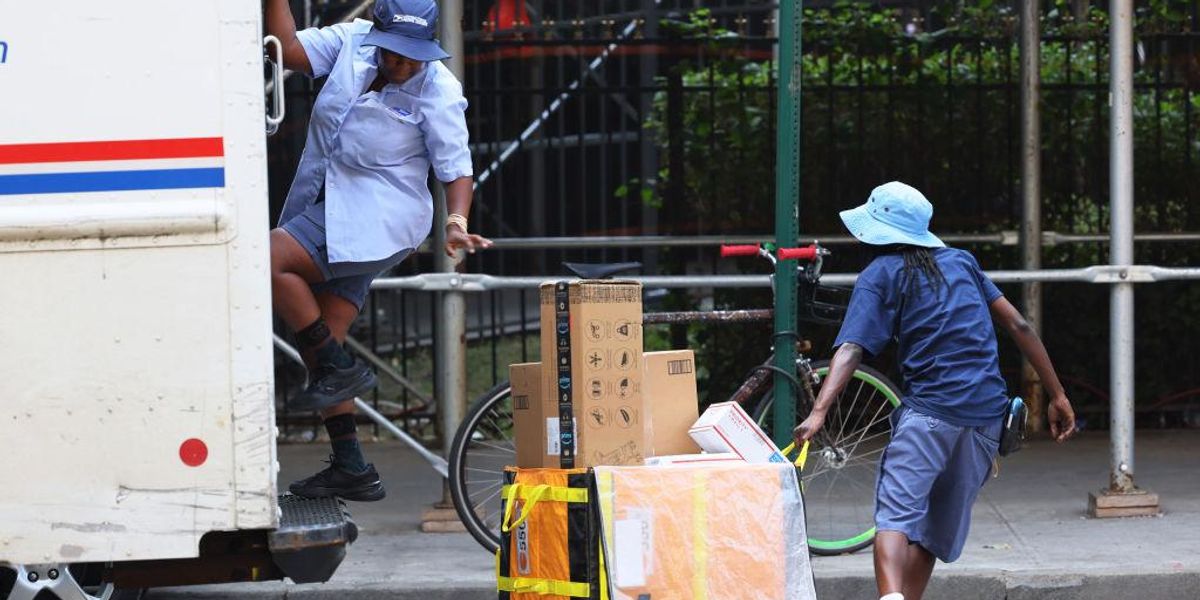Postal jobs have long been a road to the middle class for Black Americans. The Postal Service began employing Black workers shortly after the Civil War and became a major source of good, middle-class jobs for this share of the workforce in the early 20th century.
During the 1940s, civil rights advocacy, combined with wartime needs, created even more opportunities for Black postal workers. By the mid-1960s, their leadership had increased significantly, with the three biggest post offices in the country — New York, Chicago, and Los Angeles — all headed by Black postmasters. By the end of the 20th century, Black employees made up 21 percent of the U.S. postal workforce.
In 2022, Black workers made up 29.0 percent of the Postal Service workforce — more than double their 12.6 percent share of the total U.S. labor force. According to an Institute for Policy Studies analysis of Bureau of Labor Statistics data, postal workers have by far the highest median annual wage ($51,730) and the highest median hourly wage ($24.87) among the 10 occupations with the heaviest representation of Black workers.
Three of these 10 occupations have median hourly wages below $15 per hour. Of the 10 occupations with the largest shares of Black workers, USPS was the fifth-largest employer, with more than 600,000 employees.
 Wage data are from the May 2021 National Occupational Employment and Wage Estimates supplemental tables. Source: U.S. Bureau of Labor Statistics
Wage data are from the May 2021 National Occupational Employment and Wage Estimates supplemental tables. Source: U.S. Bureau of Labor Statistics
The Center for Economic and Policy Research notes that the wage gap between white and Black workers is narrower among postal workers than among private sector employees. The Economic Policy Institute has found that Black workers’ share of USPS jobs is significantly higher than their share of all public sector jobs.
Many Black families stand to gain from expanded postal financial services
The Postal Service faces constant pressure to make deep spending cuts that would be devastating for customers and employees across the country. Instead of cutbacks that could drive away customers, decisionmakers should explore new revenue sources, particularly those that would help meet important social needs, such as postal banking.
Black families would benefit significantly from expanded postal financial services. According to an FDIC survey, 11.3 percent of all Black households and 9.3 percent of Latino households did not have bank accounts in 2021, compared to just 2.1 percent of white households.
Among households with income between $15,000 and $30,000, 29.3 percent of Black households and 26.5 percent of Hispanic households were unbanked, compared with 13.6 percent of White households. Single mothers and adults with disabilities were also more likely than other Americans to be “unbanked.”
Families without bank accounts are much more likely to have to use high-cost financial services. For example, 21.8 percent of unbanked households used check cashing — almost 10 times the share of banked households that use such services. And 15.5 percent used money transfer services, more than double the 6.6 percent share of banked households that use these services.
Among all families without bank accounts, the most-cited reason was that they couldn’t afford minimum balance requirements. Other major reasons included distrust of banks, high and unpredictable fees, and inconvenient locations. A 2019 S&P Global report found that majority Black neighborhoods have lost more bank branches than non-majority-Black neighborhoods. JPMorgan, for example, reduced the number of branches in majority-Black areas by 22.8 percent from 2010 to 2018, compared to a decline of 0.2 percent in the rest of the country.
With more than 31,000 post offices across the country and a high level of public trust, USPS is well-positioned to provide dependable, affordable financial services. According to a 2015 USPS Office of Inspector General report, expanding postal financial services such as check-cashing, ATMs, and electronic money orders could generate as much as $1.1 billion in annual revenue.
Members of Congress have introduced legislation for two approaches to expanded postal financial services. These include a Treasury-backed savings system at the post office similar to what existed in the United States from 1911 to 1967 and individual FedAccounts accessible through local post offices in conjunction with the Federal Reserve.
These proposals would provide reliable, affordable alternatives to predatory financial firms. They could also facilitate distribution of federal stimulus checks. Every community across the United States benefits from a strong USPS.
Rather than weakening this vital public infrastructure, policymakers should focus on strengthening — and expanding — this service to meet 21st century needs.




